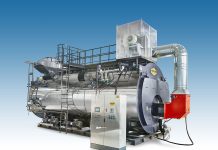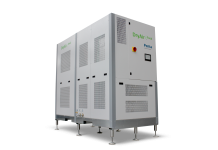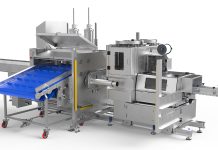 The chewiness of food, like bread, strongly depends on several parameters such as dimension, cohesion strength, lubrication degree and particle structure. During chewing, the bread structure evolves becoming a mixture composed no longer by individual particles. Experimental characterization of this process is complex and the attempts made by technologies such as laser diffraction and microscopy are not exhaustive. A recent survey, carried out by a group of French researchers (Tournier et al., 2012), has proposed to use computer vision techniques to describe such process. In particular, the group has used samples of bread prepared according to four different recipes (two kinds of baguettes, a type of toast and a type of rye bread), while the images were detected (in the RGB system) using the so-called method of gray level co-occurrence matrix (GLCM). Once captured, the images were analyzed using multivariate analysis software. The results show that the different samples have different behavior during chewing. For example baguettes are characterized by granular structure composed of rigid crust and soft crumb. On the contrary, toast has a smooth surface with dark crust particles inside the white crumb, while rye bread is more compact. In general, the structure of the samples becomes more homogeneous when the chewing cycles increase. The authors show that GLCM system is able to classify, with good approximation, the products according to these cycles. In particular, it was noted that contrast is the characteristic of the images to be used as markers of the samples’ degradation. In conclusion, the authors affirm that the chewing process strongly depends on the type of product (and its structural characteristics), but also on the efficiency of consumer’s salivation.
The chewiness of food, like bread, strongly depends on several parameters such as dimension, cohesion strength, lubrication degree and particle structure. During chewing, the bread structure evolves becoming a mixture composed no longer by individual particles. Experimental characterization of this process is complex and the attempts made by technologies such as laser diffraction and microscopy are not exhaustive. A recent survey, carried out by a group of French researchers (Tournier et al., 2012), has proposed to use computer vision techniques to describe such process. In particular, the group has used samples of bread prepared according to four different recipes (two kinds of baguettes, a type of toast and a type of rye bread), while the images were detected (in the RGB system) using the so-called method of gray level co-occurrence matrix (GLCM). Once captured, the images were analyzed using multivariate analysis software. The results show that the different samples have different behavior during chewing. For example baguettes are characterized by granular structure composed of rigid crust and soft crumb. On the contrary, toast has a smooth surface with dark crust particles inside the white crumb, while rye bread is more compact. In general, the structure of the samples becomes more homogeneous when the chewing cycles increase. The authors show that GLCM system is able to classify, with good approximation, the products according to these cycles. In particular, it was noted that contrast is the characteristic of the images to be used as markers of the samples’ degradation. In conclusion, the authors affirm that the chewing process strongly depends on the type of product (and its structural characteristics), but also on the efficiency of consumer’s salivation.
Bibliographic references
C. Tournier et al., Journal of Food Engineering, 113, 2012, 615-622



